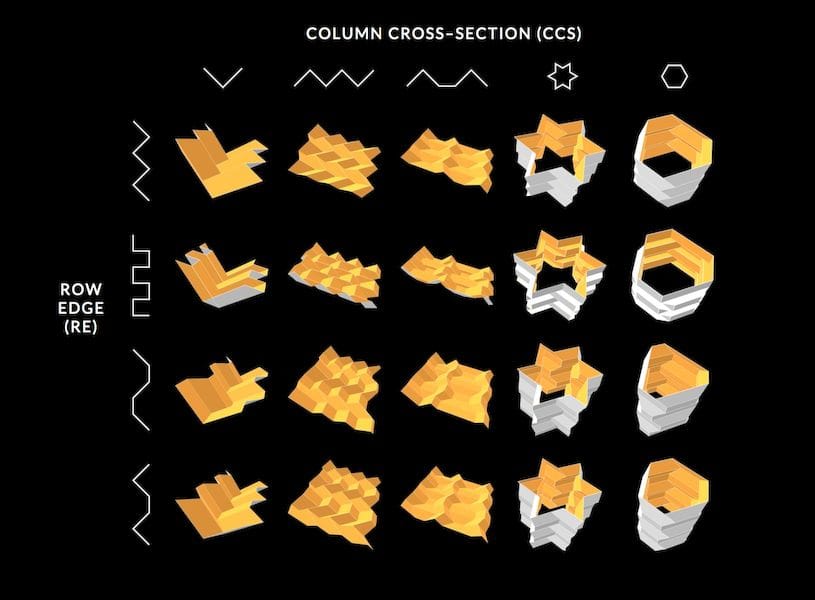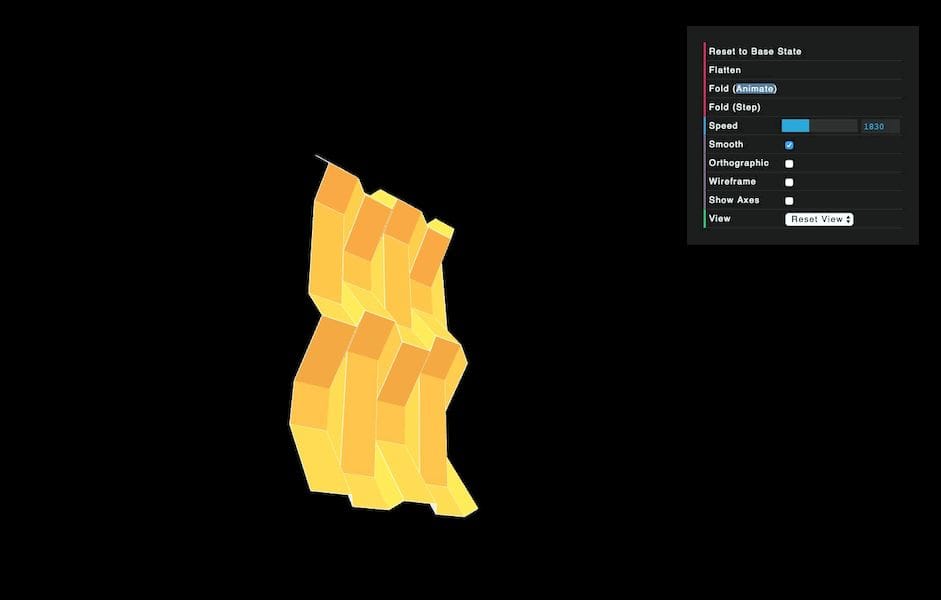
FoldStar provides a very unusual 3D model generation system.
The New Jersey-based company’s product, FoldStar, is a generative system that can dynamically create 3D models of folded geometry.
Here’s how it works, in their words:
Doubly-Periodic Folding Tessellations are a versatile family of deployable materials that repeat a pattern in “row” and “column” directions.
FoldStar Designer lets you prototype DPFTs by controlling the shape of a crease in the “row” direction, and a cross-section in the “column” direction. The Row Edge (RE) and Column Cross–Section (CCS) define your surface’s “base state”. All DPFTs fold from a flat sheet to their base states (and often beyond) without bending.
These regular patterns are interesting because they can be used in many different specialized applications.

For example, a specific repeated folding pattern may be used to reduce noise levels among certain audio frequencies. Or another pattern might be used as a shock-absorbing layer in a vehicle. Unusual exterior architectural elements could be generated. They even suggest that cardboard packaging could benefit from this approach. There are many possibilities.
FoldStar says the are delivering the “first software capability to capitalize on the new world of folding technology”, and that may indeed be the case, as I’ve not heard of this technique elsewhere.

Their site offers a kind of preview of the system, in which you select a base geometry and then view a corresponding animation that demonstrates how the system contorts the shape into the final folded object.
Once complete, I presume you can download the pattern and then incorporate it into a further 3D design, most likely by repeating the pattern as many times as required. In fact, FoldStar is actually a plug-in for Solidworks, where subsequent design activity would most likely take place.
FoldStar offers this function to the public in two ways. They have a standalone purchase option, where you can obtain a license for a one-time charge of USD$9,800. That’s a good chunk of cash, and would likely be suitable for someone who’s generating folded objects constantly. Alternatively, they also offer a cloud-based subscription service that costs only USD$800 per month.
This may be an interesting option for certain disciplines.
Via FoldStar

